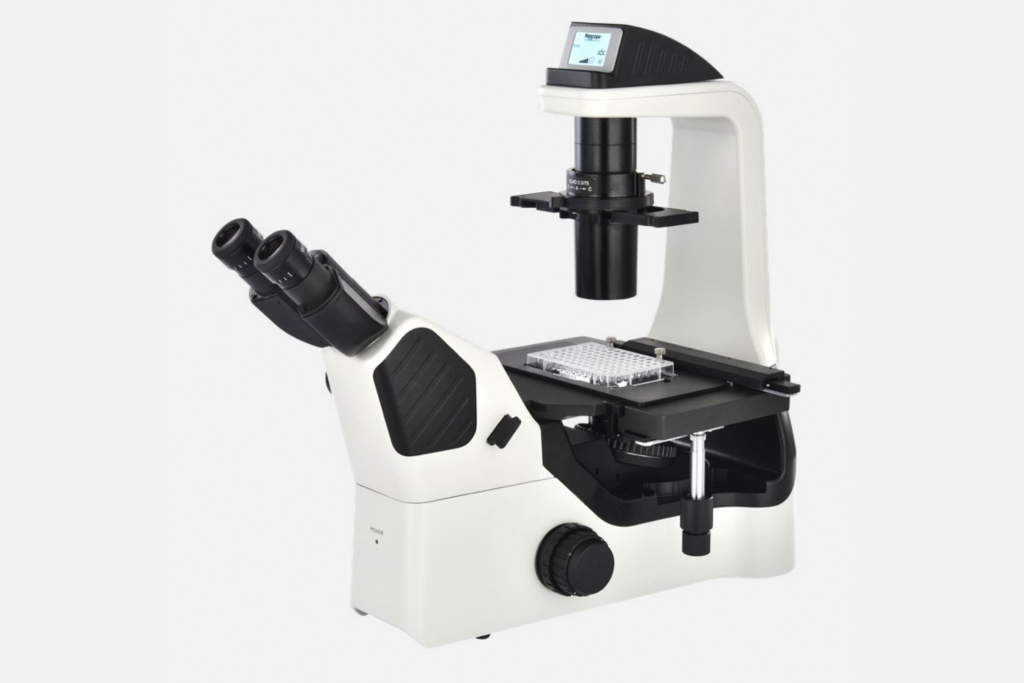
§1 What is an inverted fluorescence microscope?
Inverted fluorescence microscopes use fluorescence to study samples, such as living cells at the bottom of a petri dish or tissue culture. It is called “inverted” because of the arrangement of the microscope components so that they are placed in an inverted position. The objective lens is located above the stage, and the condenser and light source are located below the stage. The main purpose of the condenser above the specimen stage is to focus light on the specimen. Inverted fluorescence microscopes are equipped with wide-field eyepieces that allow images to be acquired over a wide field of view. It also contains regular achromatic objectives, allowing for a longer working distance of 50mm.
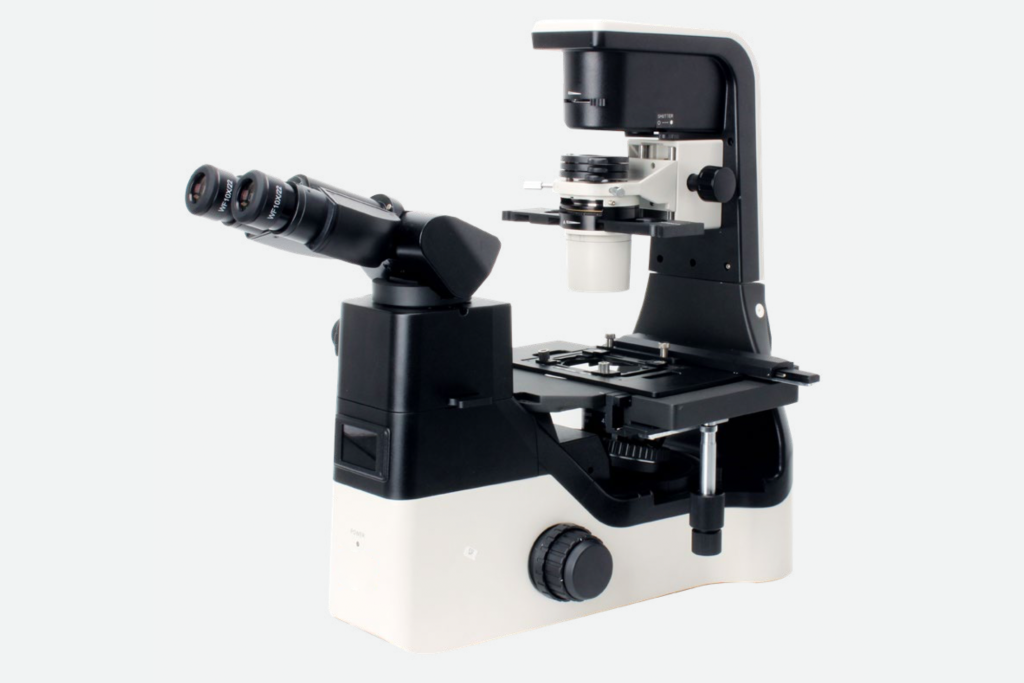
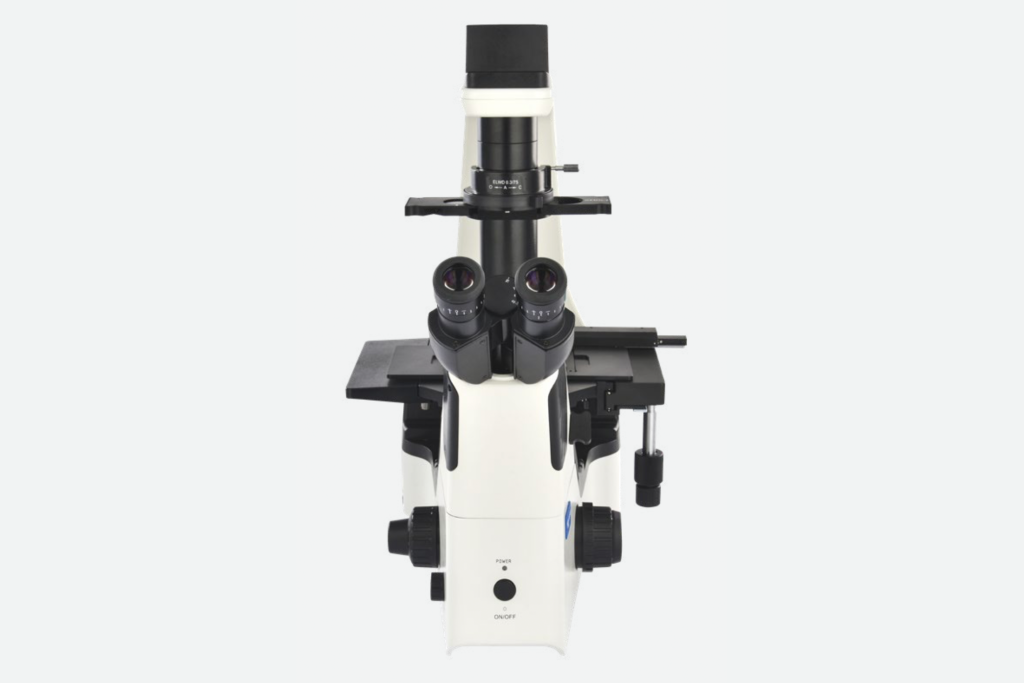
Fluorescence microscopy utilizes fluorescent dyes called fluorophores that absorb one wavelength of light (the excitation wavelength) and emit a second, longer wavelength (the emission wavelength). Since most cellular molecules do not emit fluorescence, experimenters introduced fluorescent markers for imaging. Therefore, by attaching fluorescently labeled antibodies or genetically encoded fluorescent proteins, the label can be targeted to the desired molecule. This allows for the simultaneous identification of different fluorescent molecules that can be detected at extremely low abundances, making it a very powerful technique.
§2 Principle of inverted fluorescence microscope
The microscope’s halogen lamp is used as the excitation light and illuminates the sample through the same objective lens that detects light emission. Interference from the excitation light is eliminated by a fluorescence filter cube that separates the light by wavelength, allowing the emitted light to be imaged.
The components of an inverted fluorescence microscope are similar to those of other microscopes, the only difference being the arrangement of the parts, which are placed in an inverted position. It consists of other components besides the stage, objective, eyepieces, eyepiece tubes, double concentric knobs, nosepiece, condenser and similar parts. A 6V, 30W halogen lamp with brightness control is used as an excitation lamp to illuminate the sample. It contains an excitation filter that filters out all light source wavelengths except the excitation range of the fluorophore under study. It also contains an emission filter that filters out the excitation range and transmits the emission range of the fluorophore under study. A dichroic mirror is placed between the two filters and acts as a beam splitter.
§3 Six characteristics of inverted fluorescence microscopes
- The interpupillary distance of the observation head is adjustable, the diopter of the objective lens is adjustable, and the low-hand operating platform increases the comfort of observation on the sterile table;
- Both brightfield and fluorescence use high-brightness, long-life LED lighting;
- Load an intelligent operating system, including objective lens code converter, multi-function dimming knob and status display, etc.;
- Long working distance condenser and the condenser can be moved out of the light path, so even multi-layer culture bottles can be observed;
- Can install 3 sets of fluorescent modules, suitable for most fluorescent dyes;
- The fluorescent module is linked with the corresponding LED light, making it more convenient to switch the fluorescent module;
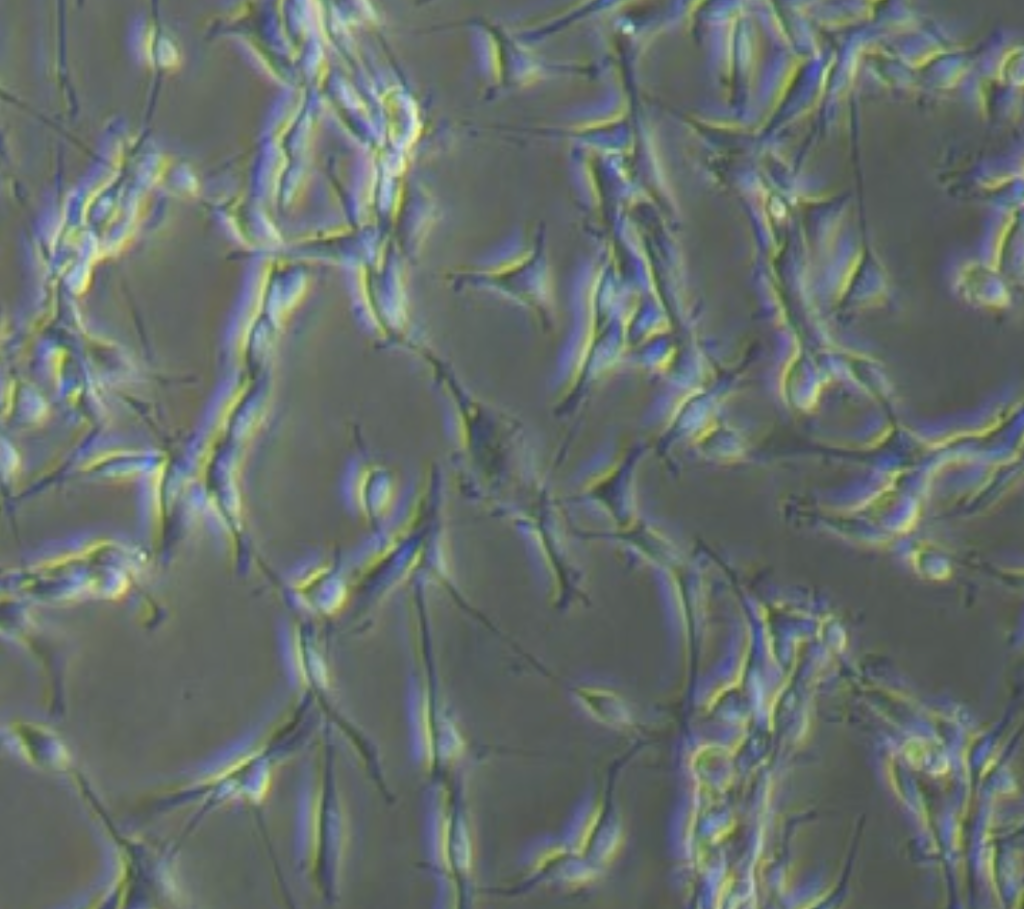
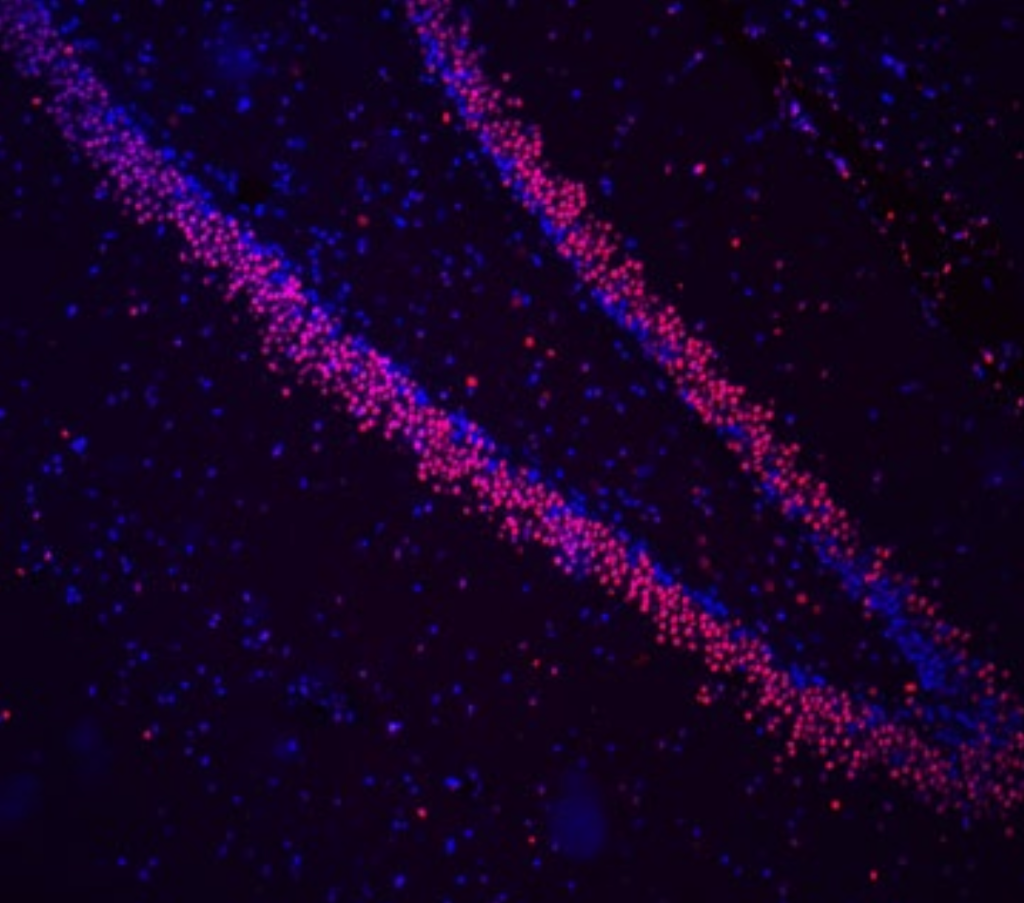
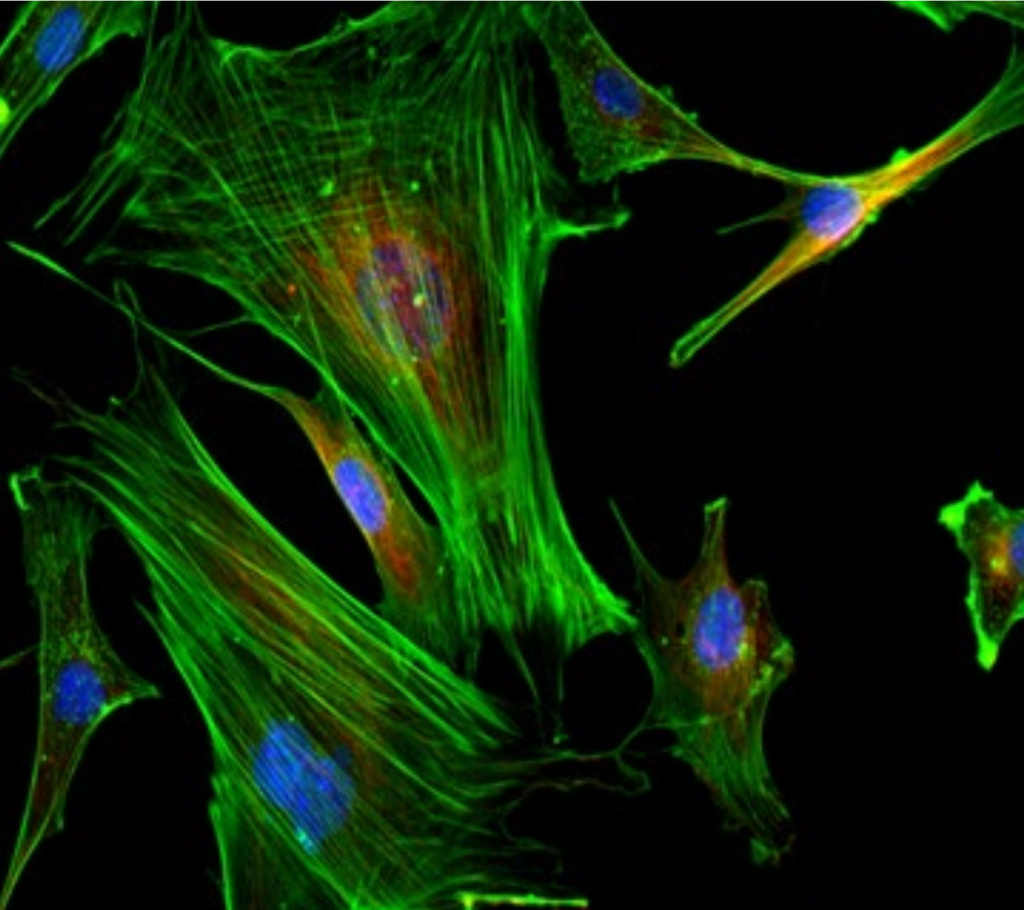
§4 Four-point performance of inverted fluorescence microscope
The popular inverted (fluorescence) microscope is one of the essential tools in the cytology laboratory and is used very frequently. The performance of the inverted (fluorescence) microscope is reflected in the following aspects: optical performance, light source performance, intelligent operation and upgrade potential, etc.
※1 Optical performance
Today’s inverted microscopes all have phase contrast and Hoffmann phase contrast technologies. The former is suitable for observation of adherent cell culture, while the latter can produce a three-dimensional sense and is therefore suitable for thicker cells or cell injection. The optical path of the microscope all adopts a 60mm parfocal infinity optical system. Objective lenses designed using a 60mm parfocal optical system must enlarge the objective pupil size to obtain higher NA values and working distances. For users of inverted microscopes, these two points are more significant.
※2 Light source performance
All manufacturers now use long-life LED light sources as brightfield light sources for inverted microscopes. In terms of fluorescence light sources, LED fluorescence is used and three color filter units can be installed at the same time.
※3 Intelligent operation function
When the operator switches the objective lens, the light intensity can be automatically adjusted according to the set memory to improve work efficiency. At the same time, the LCD screen on the condenser can display the usage status of the microscope, including magnification, light intensity and standby status, even in darkroom conditions. Able to operate a microscope easily.
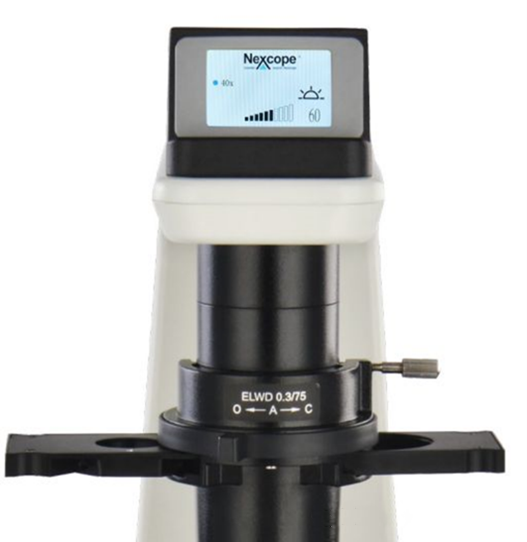
※4 Upgrade potential
In addition to phase contrast and Hoffmann contrast, ordinary inverted fluorescence microscopes can also be equipped with relief contrast technology. The imaging system is also the main accessory that users need to purchase. The inverted fluorescence microscope is equipped with a camera interface on the left side of the body so that users can look directly at the sample on the stage without obstruction. At the same time, the microscope can be equipped with a camera of up to 20 million pixels, combined with powerful image processing software, to meet the acquisition, processing and analysis of laboratory microscopic images.


§5 Function summary:
In terms of optics, the inverted fluorescence microscope has various contrast modes. In terms of fluorescence, it provides three-color LED fluorescence with a lifespan of more than 20,000 hours and an on-and-off operating experience. It is especially suitable for closed work in cell rooms.